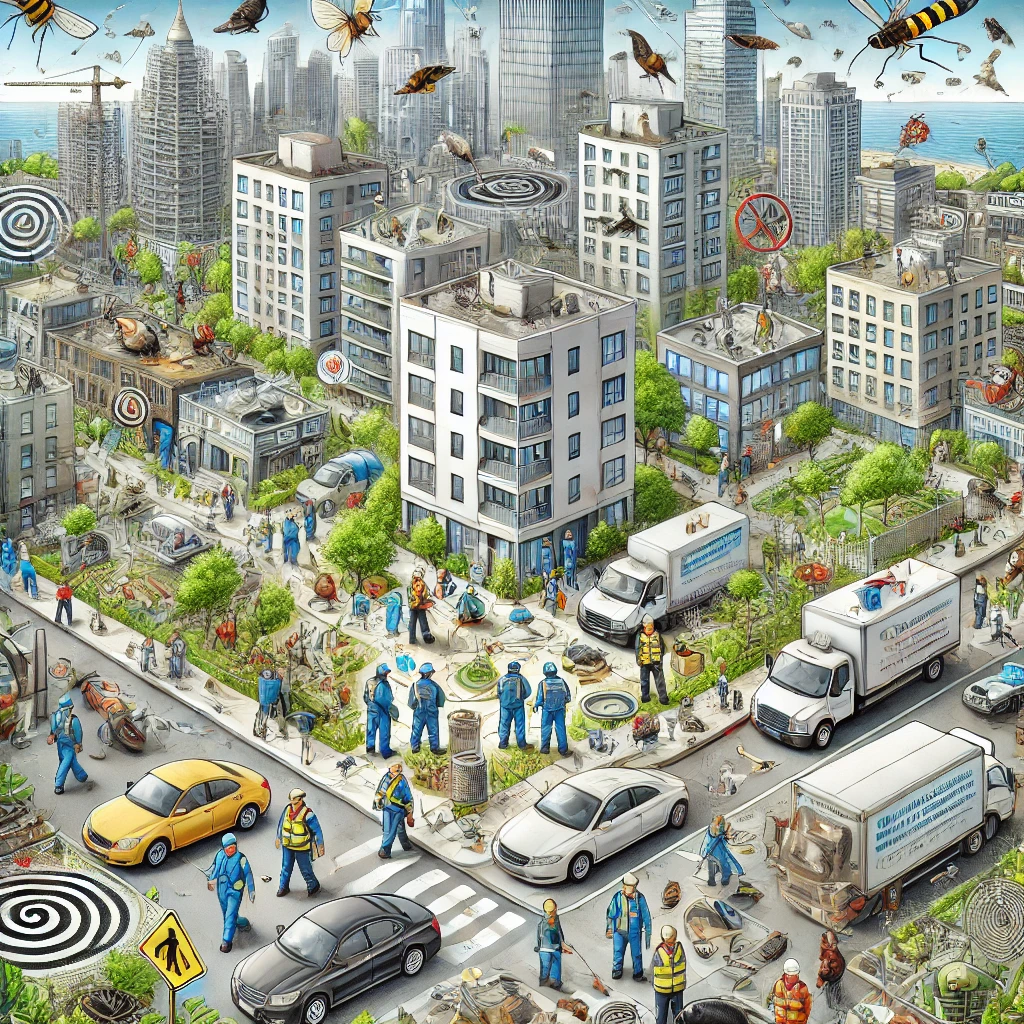Introduction to Urban Pest Control Challenges
Urban pest control in densely populated areas presents unique challenges due to high population density, limited space, and complex infrastructures. Managing pest populations effectively in such environments requires innovative solutions and adaptive strategies. The high concentration of people and structures creates ideal conditions for pest proliferation, complicating control efforts.
High Density and Pest Proliferation
The primary challenge in densely populated urban areas is the rapid proliferation of pests. High density provides ample resources, such as food and shelter, which support pest populations. For example, rodents and cockroaches thrive in environments with abundant waste and clutter. Addressing these issues requires comprehensive strategies that target both pest populations and the conditions that support their growth.
Infrastructure Limitations
Urban areas often have complex infrastructures, including narrow spaces, hidden voids, and extensive utility systems. These features can complicate pest control efforts by providing numerous entry points and harborage sites. Effective pest control in such settings demands thorough inspection and targeted treatments. Integrating advanced technologies, such as thermal imaging and smart sensors, can help identify hidden pest populations and structural vulnerabilities.
Public Cooperation and Awareness
Public cooperation is crucial for successful urban pest control. In densely populated areas, residents and businesses must be actively involved in pest prevention efforts. Educating the public about proper waste management, sealing entry points, and reporting pest sightings can significantly impact pest control outcomes. Community engagement and awareness campaigns are essential for fostering a cooperative approach to pest management.
Regulatory and Compliance Issues
Urban pest control is also influenced by regulatory and compliance issues. Adhering to local regulations and guidelines is vital for ensuring safe and effective pest management. This includes using approved pesticides, following application protocols, and maintaining proper documentation. Navigating these regulations requires coordination with local authorities and staying updated on changes in pest control standards.
Innovative Solutions and Technologies
Addressing the challenges of urban pest control in densely populated areas often involves implementing innovative solutions. Technologies such as automated traps, remote monitoring systems, and targeted baiting can enhance control efforts. Additionally, employing integrated pest management (IPM) approaches, which combine multiple strategies and tools, can provide more effective and sustainable results.

